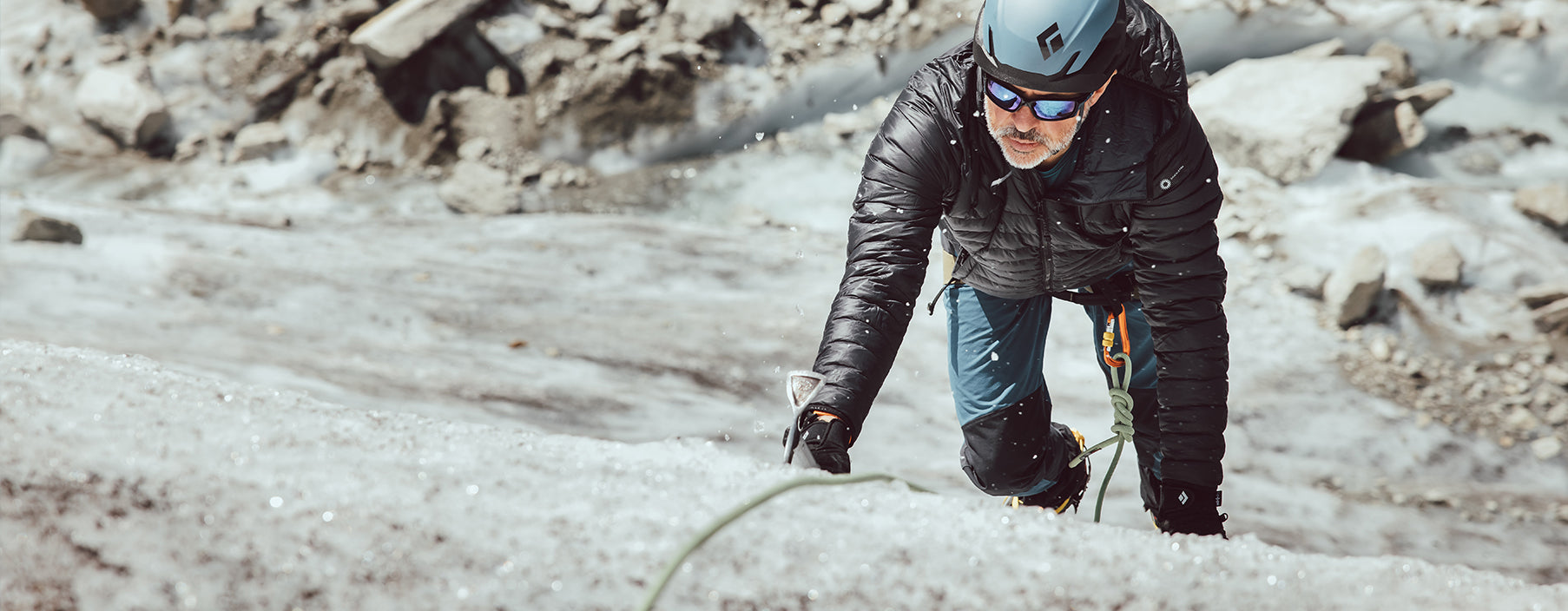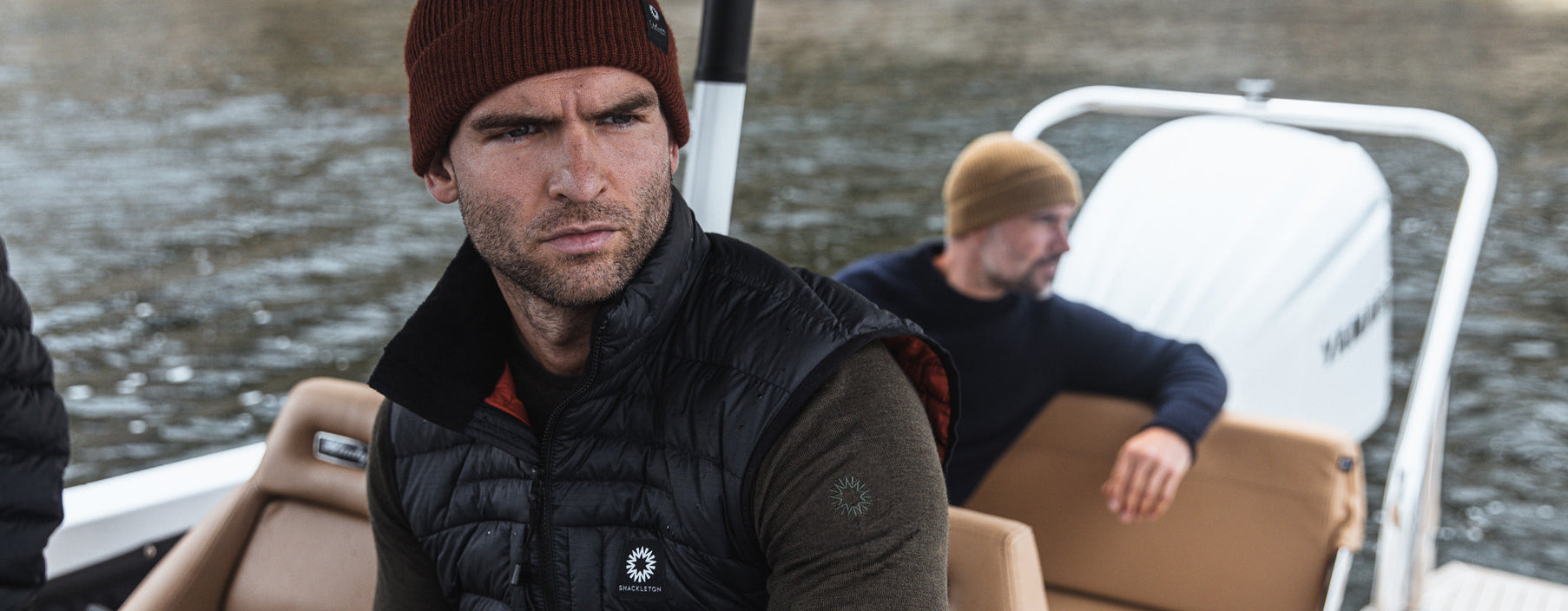
YOUR LIFELINE ON STEEP TERRAIN // A Shackleton Guide to Ropes
Whilst pulk-hauling and polar exploration are pillars upon which Shackleton is built, mountaineering and the alpine style of climbing is a fast-growing part of what we do. Finding ourselves in the mountains more and more, the Shackleton Challenges team recently shred their alpine climbing expertise in the with guests on the recent Alpine Challenge in Chamonix, which culminated in a summit of the coveted peak, Grand Paradiso. A fundamental component of alpine climbing, is of course, ropes. Your lifeline when traversing steep terrain, ropes come in different categories and lengths depending on how they will be used. Gord Betenia, Ice-Climber and Shackleton Head of Product Performance has put together a quick guide on the different types of ropes used for climbing and their applications, for your information. Read more in the latest Shackleton Journal.
Ropes fall into two categories: static and dynamic.
- Most non-climbing ropes are static - that is to say they have no stretch. In the outdoor activity world, static ropes are primarily used in marine, caving, haul systems, rescue and fixed lines.
- Dynamic ropes have a great deal of stretch and are used for climbing. The stretch helps to dissipate loads generated in falls. This helps to prevent injuries and anchor failures generated by otherwise huge shock loads.
Dynamic ropes for climbing fall into three rough categories: single, double and twin.
- Singles are the most commonly used ropes for climbing. The rope system consists of a single strand (of rope), typically between 9 and 11mm in diameter. The benefit of a single is its simplicity and overall light-weight. Their weaknesses include difficulty managing rope-drag on routes that zig-zag back and forth; limited functionality to protect traverses or do long rappels (unless a second rope is added to the system).
- Doubles are two smaller-diameter ropes that run in parallel to form a system. They're usually about 8mm in diameter. Usually only one rope is clipped in at each protection point with priority given to minimising rope drag or protecting traverses. For instance, on a route that zig-zags back and forth, one strand is used to clip in on the right side and the other the left, with the goal being to have each rope running as straight as possible. To protect a traverse, one rope is clipped into each protection point, with the other only being clipped in some distance above. The second rope will minimise the risk of the second climber being injured as a result of a pendulum fall into a corner. The primary strengths of doubles are increased safety and ability to do long rappels. It's also easy to split the weight of two ropes between two people on the approach. The weaknesses are increased overall weight, belay complexity and clutter at belays. 140 m of rope is a lot to manage in a cramped space on a windy day.
- Twins are like doubles but smaller in diameter. Typically smaller than 8mm in diameter. Both strands must be clipped into each point protection point. In that sense twins show the same weakness as a single when it comes to managing complex terrain. They are however lighter than doubles and offer the same functionality when it comes to long rappels.
An increasingly common system is to pair a single (especially a skinny single) with a highly-specialised, small-diameter (5-6mm), static rappel rope or tag line. The climbing is done on the dynamic single, which minimises clutter and fuss at belays. The climbing rope is tied the static to allow long rappels. Care must be taken to use the correct static rope, specialised knots and appropriate rappel device. The combined weight of skinny dynamic and small static may be even lighter than using a pair of twins. The static rope can also be used to haul packs on difficult terrain.
Ropes are one of the heaviest items carried by a climber. Each 10-meter section will weight roughly between 500 and 850 g (the case with doubles). You need enough rope to do rappels but the weight penalty of carrying excess rope adds up quickly. Excessively long ropes are also inefficient to haul up at each belay.
Modern alpine ropes are 60 m, with some being 70 or even 80. A 60 m single rope allows for a 30 m rappel.
Ropes are used on via ferratas primarily if the terrain is very steep; the climbers are inexperienced (especially children); rappels are expected or there are gaps in the ferrata infrastructure. Otherwise, climbers rely on energy-absorbing double-lanyards to protect against a fall. Ropes for via ferratas are short, dynamic-singles - usually not over 40 m in length unless a longer rappel is expected. These were used on the via ferrata routes on the recent Alpine Challenge.
It's VERY important to note appropriate training and experience is necessary to use ropes and rope systems safely. That includes an understanding of knots, anchors, rope tools and fall dynamics. This also applies to glacier travel and crevasse rescue and using ropes on "easy", scrambling terrain.
Gord Betenia lives in North Vancouver, British Columbia, Canada. His background includes a combination of 18 years working within the product development sphere of the outdoor industry, balanced by over three decades of experience ice climbing, mountaineering and ski touring. Throughout his career Gord has been fascinated by the challenges of improving comfort and efficiency, especially in highly-demanding cold weather environments. Gord's work at Shackleton involves taking using his acquired knowledge and applying it as a foundation to help drive Shackleton product forward.


